1951 AEC Mammoth Major saved and beautifully restored
Posted by Chris Graham on 8th January 2024
Mike Neale meets Fraser Clayton and the 1951 AEC Mammoth Major MkIII he rescued from a scrapyard in 1983, then restored to stunning condition.
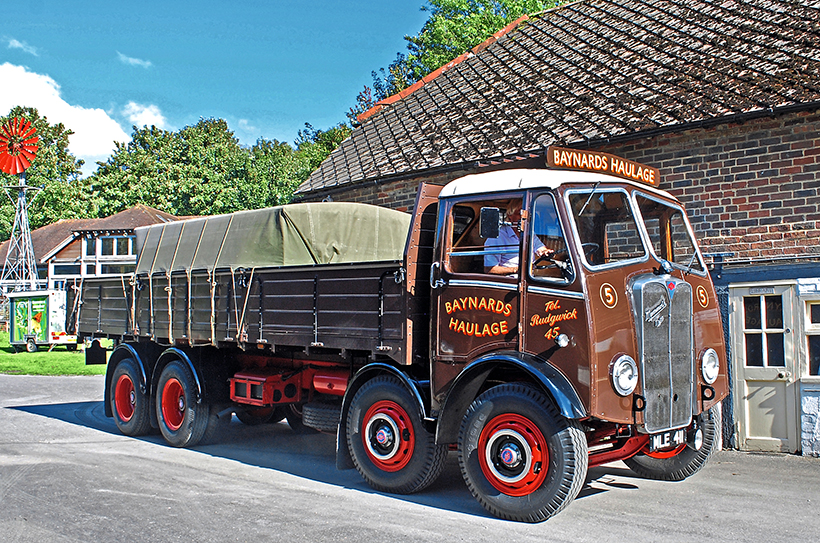
AEC Mammoth Major: Although it was restored more than 35 years ago, Fraser Clayton’s ex-Whitbread 1951 AEC eight-wheeler still looks superb.
From 1929, AEC began developing a new range of lorries, all with model names beginning with the letter M. The names chosen included Mercury, Monarch, Majestic, Marshal, Matador and Mandator. The Mammoth, model 667, was a forward-control 7-8-tonner. AEC developed a six-wheeler from this four-wheel Mammoth in 1931, which it called the Mammoth Major, the first being model 668.
AEC was determined to be the first manufacturer to build a rigid eight-wheeler with an internal combustion engine (there had been some steam-powered rigid eights previously) and, in 1934, the Mammoth Major Eight was duly launched, model 680, with either a petrol or diesel engine. Only 33 of the original version were built before the Mammoth Major Eight MkII, model 386, was introduced in 1935.
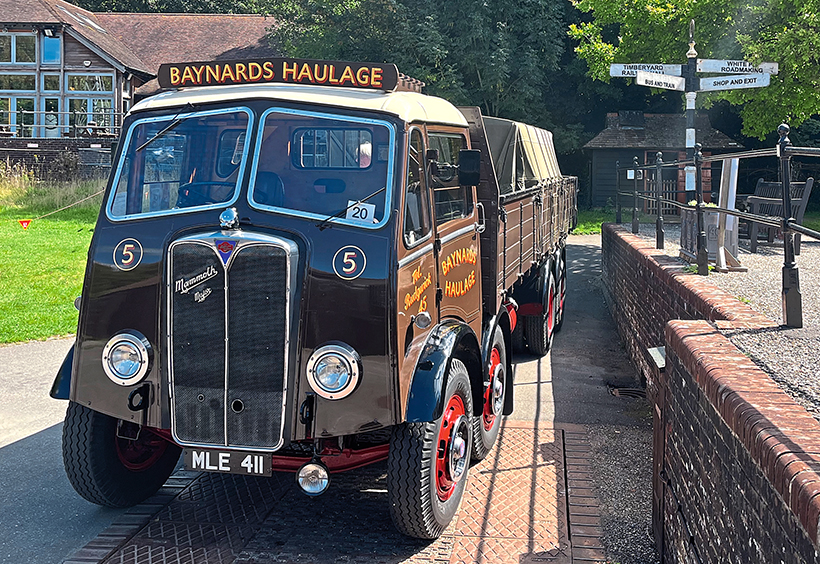
From the front, with part of the superb Amberley Museum as a backdrop.
This was over a ton lighter than its predecessor in response to the lighter-weight rival Leyland Octopus, and to lorries then being taxed by their unladen weight. The MkII 386 had a wheelbase of 17ft 9½in, and was fitted with an AEC six-cylinder, 45hp petrol engine with a bore and stroke of 110x130mm, available up until 1940, while an ‘O’ prefix was added to the model and chassis numbers to signify ‘oil engine’, the O386 model having an AEC six-cylinder 40.98hp 7.7-litre diesel engine with a bore and stroke of 105x146mm.
They had a four-speed D124 main gearbox plus a two-speed auxiliary gearbox providing ‘super top’ and ‘super bottom’ gear ratios, and a single-plate clutch to a double-reduction bevel rear axle. There were servo-assisted vacuum brakes on the first, third and fourth axles, but none on the second axle. Only a handful of MkII Mammoth Majors were built after 1940, allocated to selected civilian operators under Ministry of Transport permits.
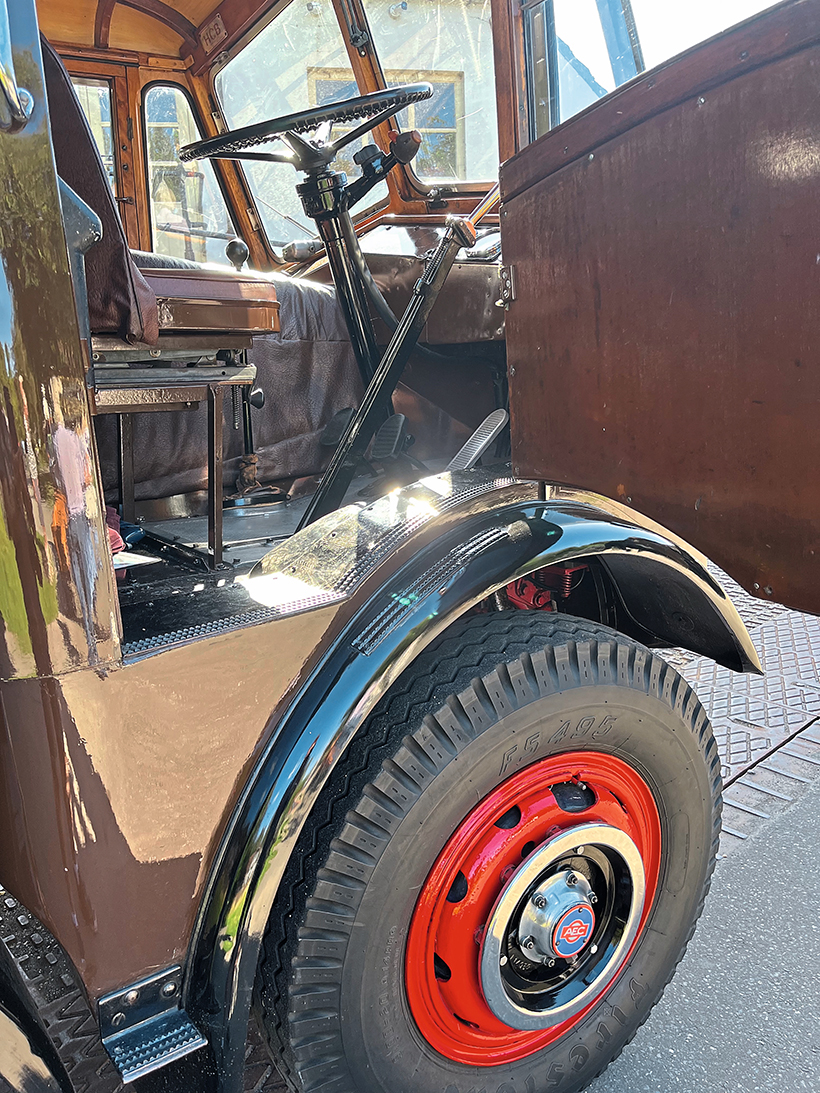
Cab access, and driver convenience in general, weren’t considered massively important design considerations in 1951.
After the war ended in 1945, the O386 went back into production with the A173 7.7-litre direct-injection diesel engine but, from September 1945, a new A206 9.6-litre AEC six-cylinder diesel engine was fitted, with a bore and stroke of 120x142mm.
The MkII was replaced by the AEC Mammoth Major MkIII model 3871 in 1948, again a forward-control rigid eight-wheeler designed to carry a payload of 15 tons. Left-hand drive versions were designated model 3881. Two wheelbases were available, 14ft 6½in and 18ft 9½in. An AEC six-cylinder A216 9.6-litre diesel engine was fitted. There was a five-speed gearbox and single, dry plate clutch. An 11.3-litre development of the engine, type A221, which had an increased bore dimension of 130mm, was also available from 1949, initially for export models.
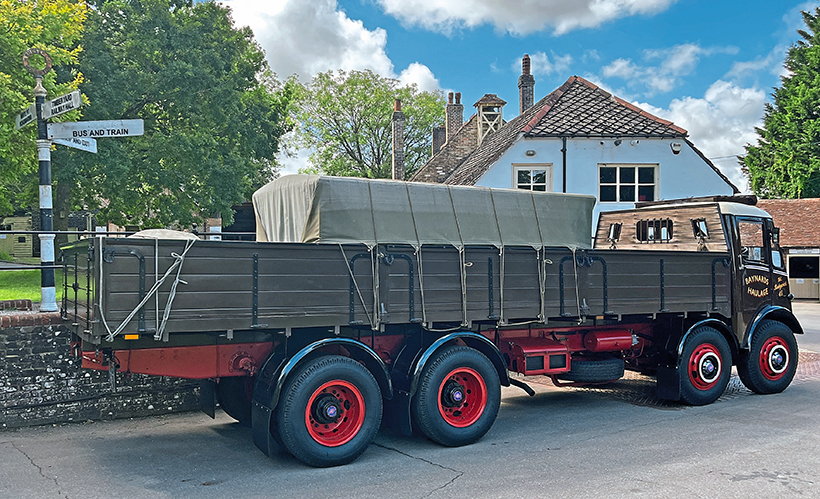
Classic eight-wheeler side profile, and it’s every bit as nice underneath as on top.
The 3871 had a single drive, double helical/double reduction spiral bevel axle. The 3871H was fitted with four-spring rear suspension and worm drive to both axles. The 3871K had an articulated rear bogie with worm drive to both axles, while the 3871M indicated a chassis fitted with articulated rear bogie and bevel drive to both axles. Air pressure brakes by either Westinghouse or Clayton Dewandre acted on the first, third and fourth axles, provided by a single cylinder air compressor attached to the back of the gearbox and driven by the gearbox layshaft.
While the MkII had got lighter, the MkIII was heavier than its predecessor, with a thicker chassis, heavier axles, springs, engine, gearbox and road wheels with bigger tyres. Many cabs were constructed by Park Royal Vehicles, by then part of the same Associated Commercial Vehicles group as AEC, following a series of mergers in 1948.
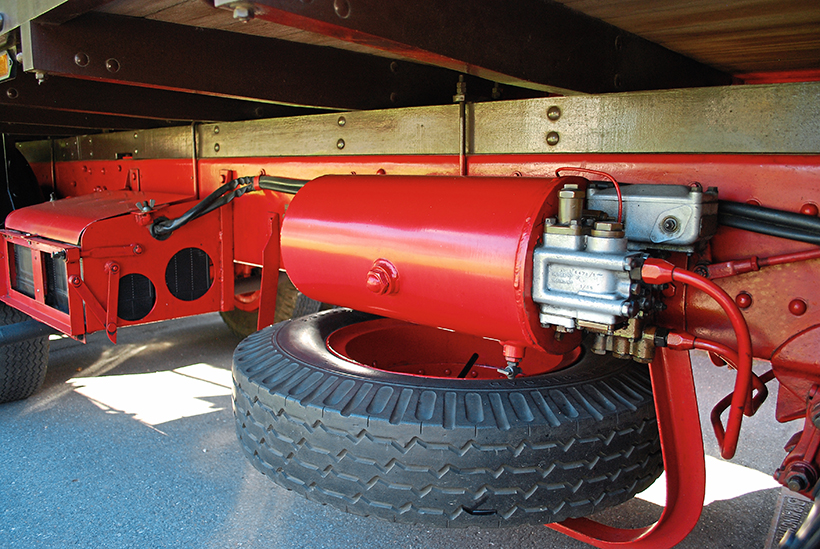
Chassis detailing; well-restored 35 years ago, cared for constantly ever since.
From May 1955, the payload capacity was increased to 17 tons and the MkIII 3871 models remained in production until June 1960. Responding to more modern looking competition such as the Leyland Octopus, some later MkIIIs were fitted with a ‘tin front’ cab; a slightly curved, pressed-steel front panel that hid the radiator behind a new grille. This was an interim measure, with the cab itself unaltered, and there were complaints about the tin front rattling.
The answer came in the form of the more modern Mammoth Major MkV announced in 1959, with a new GRP cab by Park Royal, mounted on a new steel structure to minimise vibration. Alternatively, an aluminium-on-timber composite cab was offered, in either case with the same design of grille as on the earlier tin front AECs. Aside from Park Royal, cabs continued to be built by Tillotsons and Road Transport Services, among others.
Production of the MkIII overlapped with the MkV for more than a year. There was no MkIV, a designation which AEC had planned to use for its medium-weight lorries and buses introduced in 1953, but the company already had MkIV designated heavy weight passenger vehicles by then, so it jumped straight to MkV to avoid confusion.
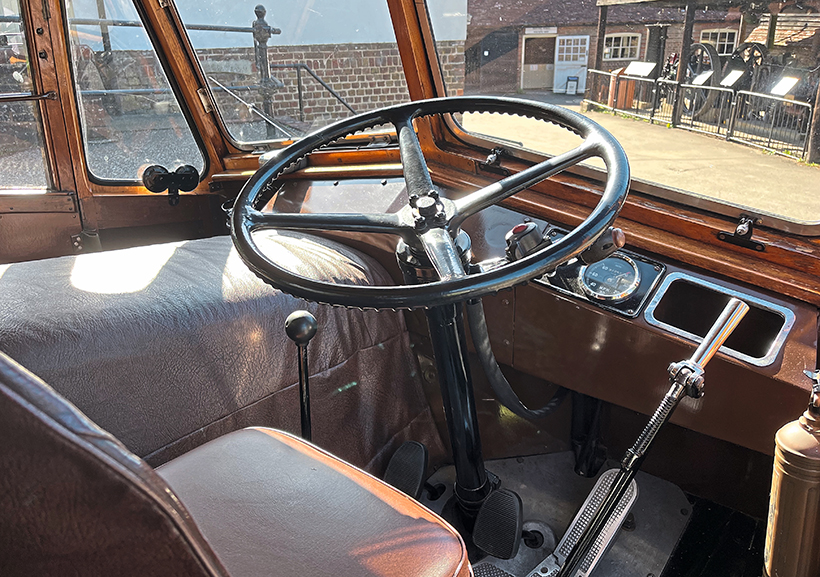
Typically basic cab interior is a bit noisy, even though top speed is only 38mph.
Whitbread & Co in London bought its first Mammoth Major eight-wheeler in 1947 for long distance use, going on to acquire more. The AEC Mammoth Major MkIII you see here was one of a batch of 10 supplied new in 1951 with a dropside body to Whitbread, and the company kept it for around 10 years.
It, along with another one of the 10, then passed to Ridgewell Transport for general haulage, often carrying a load of lead when on contract hire to Britannia Lead Mills of Northfleet, near Gravesend. After that, it went into showman’s use with Forrests of Dartford, which fitted it with a specially designed big metal framed body to carry dodgem cars, track, netting and supports. Forrests tried pulling a trailer with it but, with all of the dodgem kit on board, that was found to be too heavy.
The name Fraser Clayton is one that’s probably familiar to several readers. He’s been involved with the HCVS since the 1970s (when it was the Historic Commercial Vehicle Club), has been an HCVS trustee since 2000 and is currently chairman of the trustees.
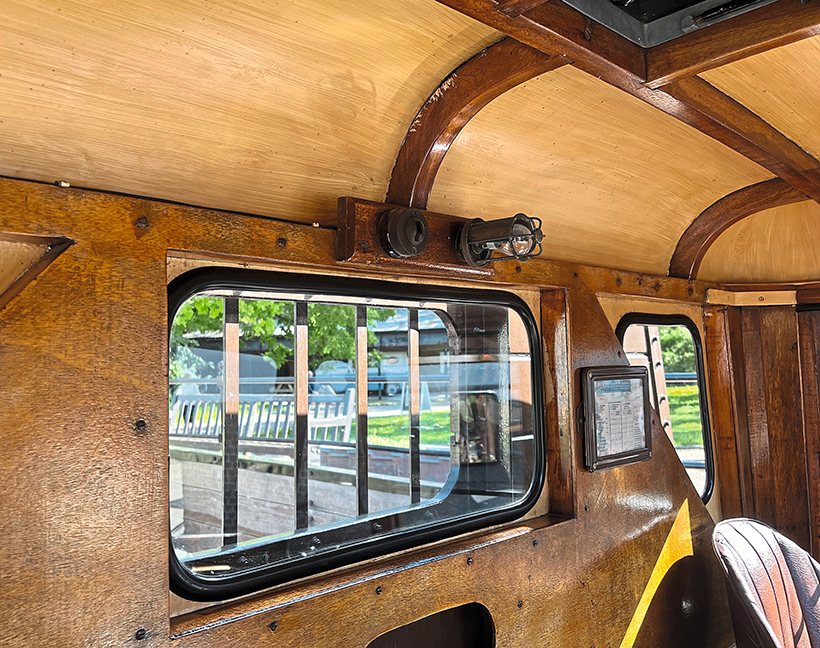
Cab contains significant quantities of wood, much of which had to be renewed during the restoration.
Starting as an apprentice mechanic with Post Office Telephones and working his way up to manage one of its workshops, he’s restored what’s believed to be the only surviving ex-GPO Telephones Morris J2 van that he originally drove in service, which is often seen at shows. He also owns a 1939 Leyland Cheetah coach with its distinctive dorsal fin, among other vehicles, and he has repainted two of the preserved buses at Amberley Museum.
The AEC Mammoth Major has now been owned by Fraser Clayton for just over 40 years. He rescued it in 1983 from a scrapyard near Epping, north of London, and drove it back home to Sussex. Although needing restoration, the lorry was intact and usable. The cab was removed and restored separately, which allowed him access to clean and repaint the chassis and overhaul the brakes. All the work was done by Fraser himself.
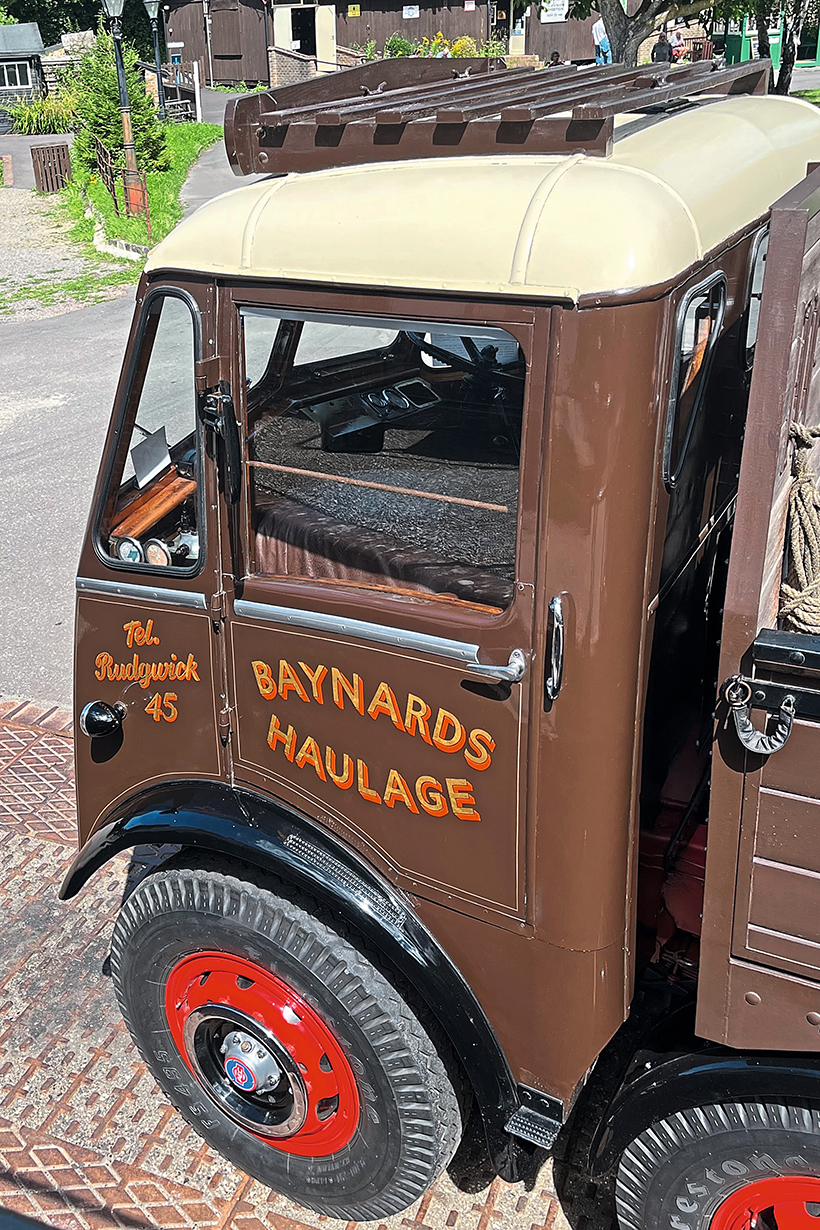
Baynards Haulage is a fictitious livery, though the colour scheme isn’t massively different from Whitbread’s, which this lorry wore for the first 10 years of its working life.
He’d acquired a pretty rotten 7ft 6in body from an identical Mammoth Major which he used as a template for the restoration, re-using all of the original metalwork with new wood cut to match the rotted timber. The lorry went back on the road in April 1987, initially as a flat, with the dropsides being added a year later.
“Its first outing was on the HCVS London to Brighton run in 1987, when the paint was hardly dry!” recalls Fraser.
“The engine in the lorry is the original 9.6-litre AEC diesel, the same type as used in the AEC RT bus. That hasn’t been touched, apart from fitting new injectors,” Fraser told me – quite amazing for one that’s over 70 years old. “I have picked up a fair few spares over the years. I don’t know the total mileage – it reads 97,000, but it’s probably been round the clock.”
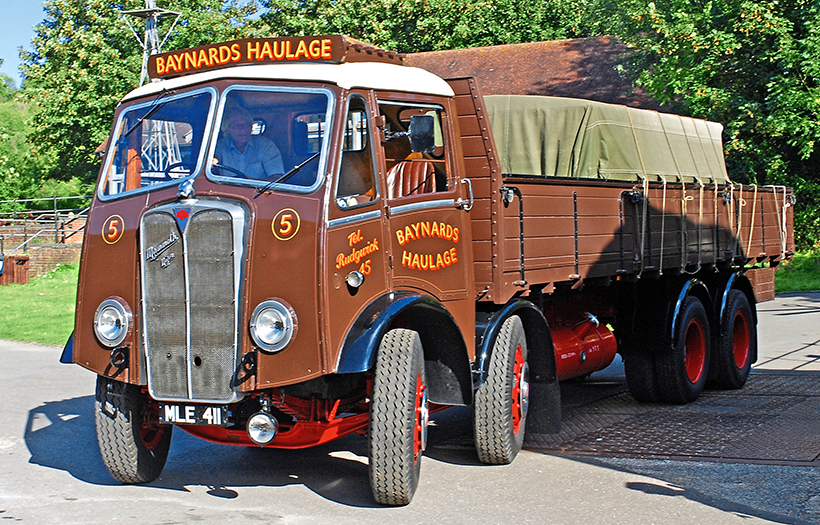
Low-speed steering takes effort! As part of the restoration, Fraser swapped the original, unbraked second-steer axle for a braked one.
It has a six-speed gearbox in place of the original five-speed ‘box. The first front axle off the scrap Mammoth Major has now been fitted as the second axle on Fraser’s lorry, so it now has brakes on all four axles, rather than just on three.
“The maximum speed is around 37mph. With no weight on it, its springs are very bouncy – it drives much better when laden,” notes Fraser. “I have driven it all over the country – it’s never low-loaded. I towed a trailer with living accommodation to the Great Dorset Steam Fair a few times, which was the same colour as the AEC, but it had ‘Foden’ on the side, as the owner that I borrowed it from had a Foden Steam Wagon!”

From the rear; it’s hard to believe that, for many years, commercial vehicles were limited to 20mph…
The livery that the lorry now wears – Baynards Haulage of Rudgwick – is a fictitious one relating to the place in West Sussex where Fraser lives, but it is typical of period liveries of the time. The colour is a similar shade of brown to that used by Whitbread when the lorry was new, which somehow seems to look different depending on whether the sun is in or out, adopting a warmer, almost orange hue in bright sunshine.
With thanks to Fraser Clayton and to Amberley Museum (amberleymuseum.co.uk/)
This feature comes from the latest issue of Classic & Vintage Commercials, and you can get a money-saving subscription to this magazine simply by clicking HERE
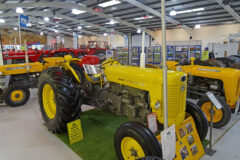
Previous Post
Tractor World Show 2024: get your entries secured now!
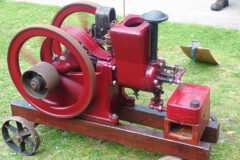
Next Post
Amazing stationary engines on display at Amberley Working Museum



